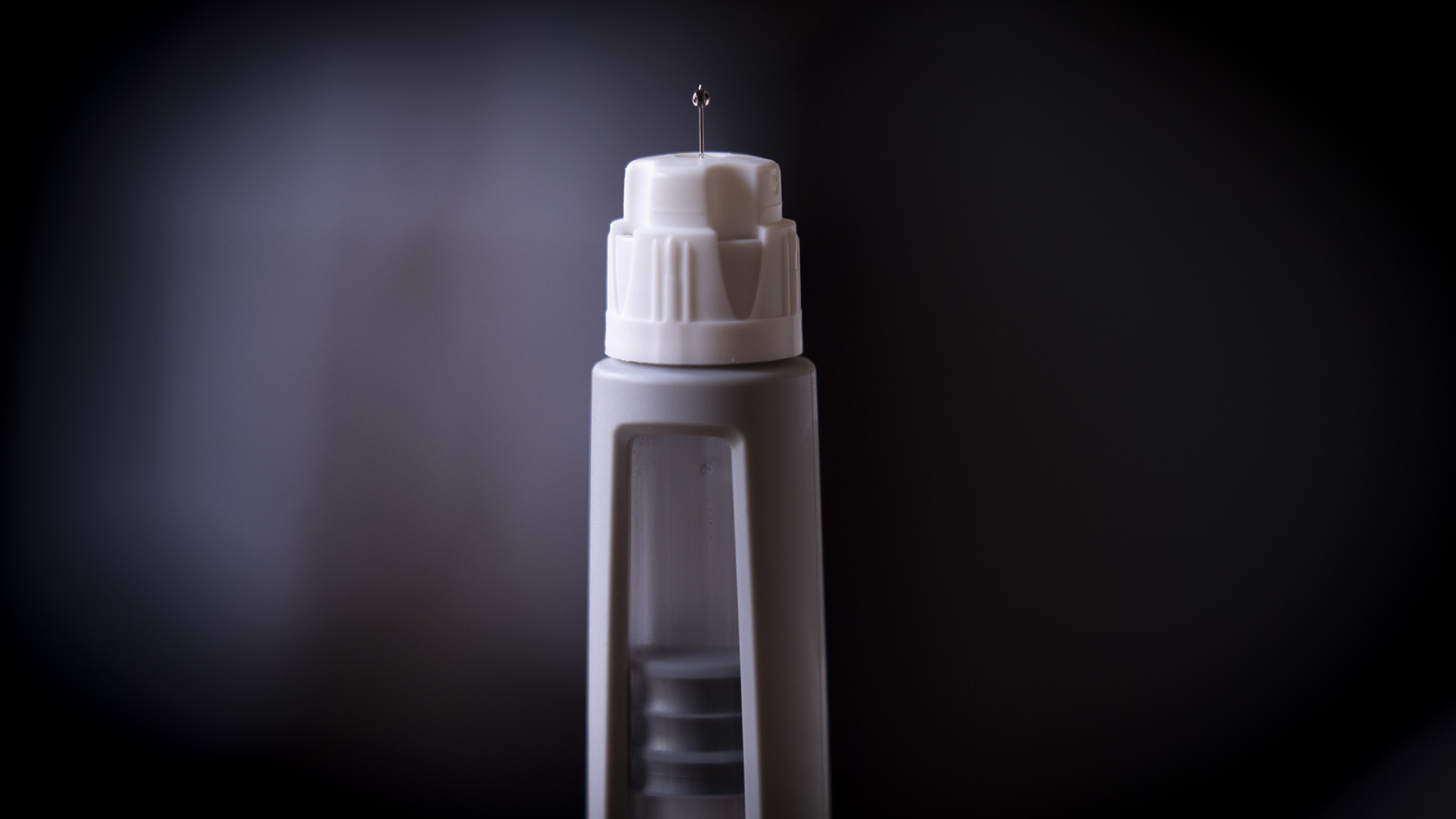“`html

Exploring the Potential of GLP-1 Receptor Agonists in Treating Substance Use Disorders
In recent years, a significant advancement in medicine has been the introduction of glucagon-like peptide-1 receptor agonists (GLP-1 RAs). Among these, Ozempic stands out as a well-known medication primarily used for diabetes management but increasingly recognized for its off-label application in weight loss. A recent study published on October 16 in the journal Addiction examines whether GLP-1 RAs could serve as effective treatments for substance use disorders (SUDs).
Research Methodology and Findings
The research team analyzed an extensive dataset comprising 100 million anonymized medical records from Oracle Cerner Real-World Data. This data spanned from January 2014—marking the initial FDA approval of several GLP-1 RA medications—to September 2022. The researchers focused on individuals diagnosed with opioid use disorder (OUD) and alcohol use disorder (AUD) who were also prescribed a GLP-1 RA for either diabetes or weight management.
The study compared severe outcomes such as opioid overdoses and acute alcohol intoxication incidents between those using GLP-1 RAs and those who were not taking these medications. The results indicated a notable reduction: opioid overdose rates were found to be 40% lower among users of GLP-1 RAs, while acute alcohol intoxication events decreased by 50%. These findings suggest that these medications may have beneficial effects beyond their primary indications.
The Mechanism Behind the Results
Dr. Fares Qeadan, lead author of the study, elaborates that opioids and alcohol were selected due to their interaction with brain reward pathways influenced by GLP-1 receptor agonists—a mechanism hypothesized to underlie their effectiveness.
This mechanism involves modulating dopamine levels within reward pathways that trigger feelings of pleasure when activated, thereby encouraging behaviors associated with those feelings. “Preliminary studies indicate that GLP-1 RAs can alter dopamine activity,” Qeadan notes, suggesting these drugs may help diminish cravings by reducing activation within these pathways.
Potential Side Effects: A Double-edged Sword?
However, there is a trade-off: some patients report what Qeadan describes as “generalized pleasure reduction.” This phenomenon can exacerbate symptoms related to mental health conditions like depression—specifically anhedonia—the inability to experience joy or satisfaction.
Mental Health Considerations in Treatment Approaches
Given the high comorbidity between SUDs and mental health disorders, Qeadan emphasizes the importance of monitoring psychological outcomes when considering GLP-1 RAs for treating SUDs—especially among populations vulnerable to mood-related side effects.
He advocates for understanding whether these medications can selectively reduce drug-related rewards without dampening other positive experiences—a crucial aspect when addressing addiction treatment holistically.
Treatment Paradigms: Balancing Addiction Management with Underlying Issues
One ongoing challenge in treating SUDs is finding an equilibrium between addressing addiction itself and tackling its root causes. Current OUD treatments often involve transitioning patients from short-term opioids like heroin or fentanyl onto longer-lasting alternatives such as methadone or buprenorphine while providing counseling support throughout this process.
“Many individuals grappling with SUDs are dealing with underlying mental health challenges,” states Qeadan. “While medications like GLP-1 RAs might mitigate substance cravings through reduced reward signals, they do not directly confront these foundational issues.” Unlike traditional medication-assisted therapies which promote gradual tapering off substances alongside harm reduction strategies, it appears that using GLP-1 RAs would focus more on swiftly curbing dependency behaviors rather than fostering long-term recovery solutions.
The Need for Comprehensive Support Systems
This raises critical questions about what kind of psychological support will be necessary during rapid transitions away from addictive substances—and whether current rehabilitation frameworks are equipped to provide this level of care effectively.
Qeadan highlights this gap as vital ground for future exploration: “Research into integrating psychological support alongside GLP-R As could pave the way toward developing balanced treatment models addressing both behavioral patterns and systemic factors contributing to addiction.”
Future Research Directions: Unpacking Complex Interactions
While this study sheds light on severe event frequency reductions linked to G LP -R As , it leaves unanswered questions regarding how exactly they influence substance usage patterns . Researchers remain uncertain if patients utilizing G LP -R As consume less alcohol or opioids overall , engage less intensely , or both .
Additionally , understanding how discontinuation affects individuals relying on G LP -R As remains unclear . Some studies indicate most people prescribed G LP -R As off-label maintain weight loss post-treatment ; however , others suggest ongoing intervention is necessary due chronic obesity challenges . Given similar chronicity associated with S U Ds , investigating potential relapse risks upon stopping G LP -R A s becomes imperative.
“Our longitudinal analysis tracked participants over several years,” explains Qeadan . “The protective benefits observed appeared stable throughout this period ; however we lack insight into dosage adjustments needed over time nor how outcomes shift after ceasing therapy . Long-term investigations would clarify tolerance development versus sustained advantages without escalating doses.”
A Broader Scope: Addressing Other Addictions
< p > This last consideration holds immense promise : although existing pharmaceutical options exist specifically targeting O UD & AUD cases , no FDA-approved interventions currently address numerous commonly abused illicit substances —cocaine & methamphetamine being prime examples . Could G LP -R A s extend therapeutic reach towards addictions involving such drugs ?
Qeadan expresses cautious optimism : “Given their ability modulate craving behavior across various contexts including stimulants like cocaine further investigation remains essential.” However he cautions against premature conclusions until more evidence emerges regarding impacts upon stimulant-related reward circuits.
< h 5 > Conclusion : Paving New Pathways For Treatment Options< / h5 >
< p > Ultimately,this research represents an important initial stride towards diversifying available treatment modalities targeting S U Ds.Qaedansuggeststhatclinicaltrialsarethenextlogicalstep:”To deepenourunderstanding,ratedcontrolledtrialsfocusedexclusivelyonS U Dswouldbeapriority.TheseinvestigationcouldvalidatewhetherG L P-R Ascandirectlycurbsubstanceusehelpidentifyoptimaldosingstrategies,andestablishlongtermsafetyprofiles.”
He also proposes additional avenues worth exploring:”Neuroimagingstudieswouldprovidevaluableinsightintorewardcircuitrychangesinreal-timeallowingusobservehowG L P-R Asaaffectbrainactivityrelatedtoaddictionandcravings.FurthermoreexaminingtheimpactofG L P-R Asaotheraddictivebehaviorslike nicotine dependencecouldclarifybroaderapplicabilityguidingtailoredinterventions.”
< / p >
< p > The post < a href = "https://www.popsci.com/health/ozempic-alcohol-opioids/" > Could Ozempic And Similar Drugs Be Used To Treat Substance Use Disorders? appeared first on < a href = "https://www.popsci.com" > Popular Science
Source
“`





